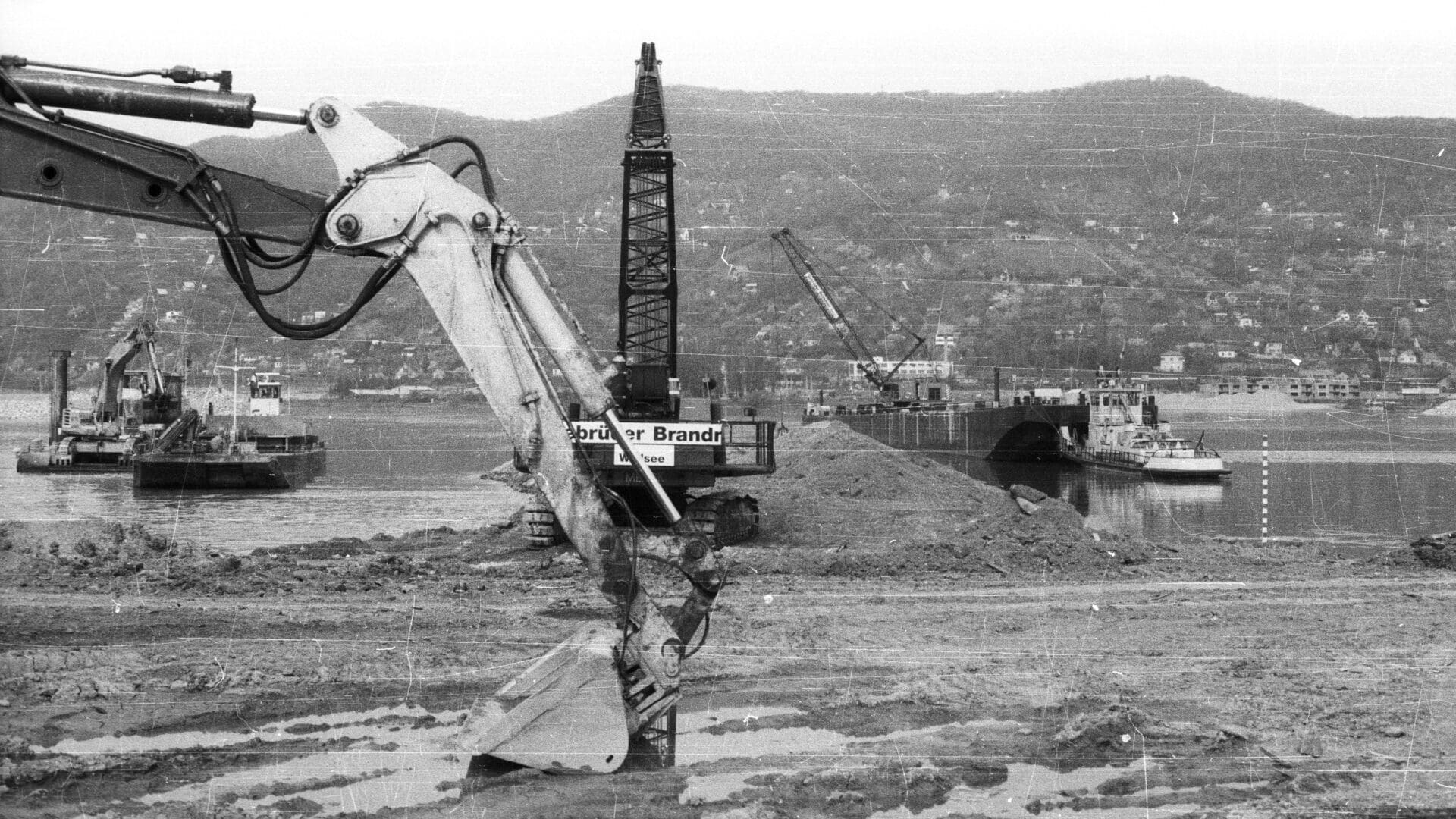Forty-six years ago, Hungarian and Czechoslovak officials met in Budapest to sign a treaty which had truly unprecedented and irreversible effects not only in their countries’ bilateral relations but also on the ecological systems of the region. And to put it that way is not just the usual journalistic drama-seeking: the Budapest Treaty, which should have laid the groundwork for the Gabčíkovo–Nagymaros Waterworks turned out to be just the beginning of decade-long legal and political disputes—some of them still unsettled to this day—and a would-have-been ecological disaster on the Hungarian section of the Danube.
An ‘Unbreakable’ Friendships (Without Benefits)
There were times when the former Eastern Bloc was all about the allegedly ‘unbreakable’ friendship of the Communist nations in the region. As idealistic as it may sounded, it is hardly a puzzle why many could get behind this idea. After two world wars, genocide and forced population transfers, many understandably wished for more peaceful relations with their neighbours.
That being said, there tended to be some difficulties with these ‘unbreakable’ friendships forged under the careful supervision of the USSR. First of all,
they usually did not last very long in general once the pressure from Moscow eased.
The former Soviet republics in the Caucasus were one of the first to experience the genuinely aggressive nature of old ethnic conflicts that had been swept under the carpet in the heyday of the Soviet Union. The same could be said about the longstanding international tensions in Central Europe. Mind you, luckily none of them resulted in open aggression. But as soon as the Soviet rule was over, the tensions became open again, and it was up to the young states in the region to find peaceful solutions for them.
The other problem was that these forced friendships often resulted in delicate situations known as complex interdependences in international relations theory. In such situations, the actions of one actor have a direct and profound impact on the policies and actions of the other(s), which, in turn, resort to actions that have similarly grave effects on the first actor. Environmental issues are typical examples of such nexuses.
As it turned out, Hungary and Czechoslovakia (and later the independent Slovak Republic) found themselves in the middle of such a complex interdependence just amidst the fall of Communism.
A New (and Not So Cheap) Barrage System on the Danube
The abovementioned Budapest Treaty was a bilateral accord between Hungary and Czechoslovakia, aiming to establish the contractual framework for the construction of a complex waterworks system along the Hungarian–Czechoslovak section of the Danube, including the modalities of the investment as well as its future usage and upkeep. The treaty foresaw the establishment of a barrage system composed of a hydroelectric power station near Gabčíkovo (a town with an overwhelmingly ethnic Hungarian population called Bős in Hungarian, in Slovak, Beš, renamed after Jozef Gabčík, a Slovak WWII resistance hero), a new dam system with an artificial canal near the Hungarian town of Dunakiliti, and a secondary, albeit smaller reservoir and barrage near Nagymaros, some 50 kilometres north of Budapest—hence the name Gabčíkovo–Nagymaros Waterworks.
While the Soviets had been pushing the project since the early 1950s, it is worth mentioning that
the idea of building such a dam system goes back to the golden days of Austria–Hungary.
Of course, the main aim then would have been to improve the navigability of the Danube and to mitigate flood risks rather than to generate electricity, however, with technology advancing, this latter aspect also gained significant importance.
Although the Budapest Treaty was signed on 16 September 1977 and initialled just a couple of months later, construction work did not start for years afterwards, as neither Hungary’s nor Czechoslovakia’s economic performance enabled such an immense investment to be carried out. Hungary’s situation was especially delicate as the country was already been significantly indebted at that time. The government intended to finance its part of the project with further loans from the USSR in a way that the debt would later be paid off by reselling the electricity produced by the waterworks system. However, that Soviet loan was never transferred.
Since the vast majority of the investment was set to be carried out on Czechoslovak soil, Hungary was to pay for or complete a certain part of works in the neighbouring country to ensure a fair division of costs. Eventually, this constellation resulted in Hungary worsening its already crippling financial situation and credit rating, only to construct a hydroelectric power plant in (and as it turned out: for) a foreign country, for the promise of receiving 50 per cent of the electricity to be generated in return.
Gabčíkovo–Nagymaros Begins
Nonetheless, at the beginning of the 1980s it seemed increasingly unlikely that the Gabčíkovo–Nagymaros complex would produce any electricity in the foreseeable future. The original completion deadline of 1990 was postponed by mutual agreement in 1983 as both governments hoped that the economic prospects of the region would improve in the upcoming years.
It was precisely in 1983 that the Central Committee of the Hungarian Socialist Workers’ Party asked the Hungarian Academy of Sciences to evaluate the expected environmental and economic impacts of the project. As could have been expected, the Academy’s evaluation suggested that the realisation of the project
would have detrimental effects not only on the ecological system of the Danube itself, but also on that of the areas alongside its shore,
including the underground water reserves of much of the Budapest region. On the basis of these and other economic considerations, the Academy advised to postpone or even abandon the project.
However, the Hungarian government disregarded the Academy’s opinion and pushed for commencing the construction works (despite not receiving the promised loan from the Soviets), thus totally contradicting the previous actions of that very same governing elite just a couple of months earlier. Of course, they had their reasons for this: the pressure from the USSR’s side was immense—the development of the Danube as an important waterway to the Black Sea was one of Moscow’s long-term projects in the region—which rendered all environmental and even economic concerns secondary.
While the Hungarian and Czechoslovak governments were seemingly united in their aspiration to complete the Gabčíkovo–Nagymaros Dam, the general public grew increasingly critical of the project in both countries, especially in Hungary. Since an open discussion of the investment was practically impossible in the political climate of the time, the opponents of the project started to distribute samizdat newsletters about the waterworks in 1984. While the barrage system was to cover 2,0 and 3,5 per cent of the energy needs of Czechoslovakia and Hungary respectively, it would endanger the water safety of 20 and 30 per cent of their respective populations, the environmentalists argued. They also pointed out that the realization of the dam and waterworks near Nagymaros would have a detrimental aesthetic and environmental effect on the otherwise popular tourist destinations of the Danube Bend.
Despite the fact that the civic resistance had been gaining increasing support from the public, the Hungarian government was keen expediting the works and therefore took out another loan in 1986, this time from Austria, to secure the financing of the new dams near Nagymaros and Dunakiliti. Meanwhile, the construction works continued on the Czechoslovak side, too.
The zest did not last very long, however. Although tens of thousands of demonstrators took to the streets in September 1988 in Budapest and at the Danube Bend, the National Assembly was still confident that the investment must be carried out, moreover, the project deadline of 1995 was brought forward by a year. And then in May 1989, all of a sudden, the Hungarian government led by Miklós Németh changed its mind about the project.
Németh announced that the construction works in Nagymaros and Dunakiliti would be halted with immediate effect
and that the government would seek the opportunity to renegotiate the entire project with its Czechoslovak counterpart.
What might have caused this unexpected change of heart? Was it the mass protests against the project? Was it the dire financial situation of Hungary? Was it the inevitable fall of Communism? We may never learn, but one thing is certain: what they might have believed to be the end of the troubles was just the beginning.
Complex Interdependence and Blatant Unilateralism
For the Czechoslovaks were actually not particularly fond of Hungary’s newfound—and, to be fair, quite unforeseen—obsession with environmental responsibility. By June 1989, less than a year after its official recommitment to continuing the project, the Hungarian government made it clear that it is unwilling to finish the Nagymaros facilities and that the completion of those near Dunakiliti should be subject to renegotiation. Its counterpart, however, argued that the Budapest Treaty was still binding (which it was, indeed) and therefore saw no need to alter the original agreement. Moreover, the Czechoslovaks threatened Hungary with a unilateral completion of the project, which later became known as Version ‘C’. In spite of his initially critical stance towards the project, even Václav Havel adopted a supportive position of that version after the Velvet Revolution, thereby shattering Hungarian hopes about an alternative solution.
But why was this Version ‘C’ so dreadful? During the intergovernmental negotiations of that time, a number of possible scenarios for the waterworks’ fate was listed. Version ‘A’, favoured by Prague and Bratislava, would have been the completion of the entire project according to the original plans. Version ‘G’, Hungary’s preference would have returned the Danube to its original state and demolished all facilities previously installed. Version ‘C’ was Czechoslovakia’s (and later Slovakia’s) unilateral suggestion: it foresaw the construction of a smaller reservoir and a dam south of Bratislava as well as the rerouting of the Danube—which represented the state border between Hungary and Czechoslovakia—on Czechoslovakia’s own territory, thus drastically altering the water yield in the original riverbed on Hungarian soil.
The harsh realities of the complex interdependence and the ensuing dilemmas were becoming evident day by day: should Hungary give in to Czechoslovak demands, irreversible environmental and economic damage would come as a consequence. Should the country choose to insist on scrapping the project, there would be no guarantee that the counterpart would not go their own way and decide to finish the project according to Version ‘C’ in its own territory—
thereby causing a minor ecological disaster in Hungary as collateral damage.
This already puzzling situation became just a bit more complicated as the dissolution of Czechoslovakia proceeded. The first government of Slovakia, led by Vladimír Mečiar, was well-known for its aggressively anti-Hungarian stances, which was reflected in its ‘waterworks policy’ as well. Assuming that Hungary was not going to change its position, Bratislava—understandably—pushed for an expedited construction of Version ‘C’ on its own soil. In response, Hungary unilaterally annulled the Budapest Treaty in late May 1992.
Five months later things took an even more drastic turn as Czechoslovakia decided to reroute the Danube according to Version ‘C’. In late October, some 83 per cent of the original discharge of the river was diverted to a new, artificial canal on the Czechoslovak side without the consent of the Hungarian party or any legal basis, posing a direct threat not only to the ecosystem of the original river bed but also to the agricultural lands and forests along it. The dreaded ecological disaster was about to materialize.
The Process
The unilateral action caused a Europe-wide stir. The European Community stepped up to liaise between the parties. And they accepted, albeit with a questionable motivation: as both countries wanted to become members of the future European Union in the medium term, it did not seem a bad PR move at the beginning of the integration process to accept the offered assistance and take the case to the International Court of Justice in The Hague.
The trial in The Hague officially began in 1993. It is worth noting that the 1994 parliamentary elections brought significant changes in the position of the Hungarian side. Many of the backbenchers of the Socialists who won the elections supported the full completion of the waterwork system, and so it was that while Hungary was officially arguing against the project in The Hague,
the government’s representatives were preparing the implementation of Version ‘A’ in secret bilateral negotiations.
This, of course, significantly worsened the prospects of the official Hungarian position in the Hungarian-Slovak bilateral relationship.
In 1997, the court delivered a judgment condemning both parties: Hungary for unilaterally terminating the agreement, and Slovakia for arbitrarily diverting the Danube and putting the power station into operation near Gabčíkovo. However, the question of how the judgment was to be implemented sparked new disputes between the two countries. The Hungarian government, led by Gyula Horn, agreed to build a dam near Nagymaros and also to allow the Slovaks to release less than 8 per cent of the original water yield into the Danube’s old bed. This led to further mass protests in Hungary, which prompted the Hungarian government to withdraw from the bilateral agreements signed on the implementation the ruling.
Horn’s government was replaced by the first Orbán administration in the 1998 elections, but this meant that the new negotiating team on the Hungarian side had to start negotiating from scratch. The first Orbán government failed to achieve a breakthrough, largely due to the unwillingness to come to a resolution on the Slovak side. By then, it had certainly become axiomatic in Bratislava that the Hungarian part of the waterworks system would probably never be built, and that the Gabčíkovo hydropower plant would never operate as planned. However, it will still produce electricity and the water from the rerouted Danube can be put to excellent use by agriculture in the Danube Basin, which will create a very convenient situation for the country as a whole, the Slovaks reasoning went.
The Eternal Case of Gabčíkovo–Nagymaros
The issue of the Gabčíkovo–Nagymaros waterworks is still not completely settled, but it gradually disappeared from the public consciousness by the mid-2000s. Of course, the project still has many supporters in Hungary, for example in some departments of the Budapest University of Technology. They argue that its implementation, using modern means, would minimize the environmental damage, while significantly improving the navigability of the Hungarian stretch of the Danube and, of course, helping to diversify the country’s energy mix. However, those in favour of the project are in a minority, while there is a consensus in national politics that the project would do more harm than good.
But the assessment of Hungary’s behaviour in the dispute is far from uniform. While many say that the Hague tribunal ultimately upheld Hungary’s case, this is only partly true: the Hungarian side acted illegally when it unilaterally terminated the Budapest Treaty, and the fact that Czechoslovakia then arbitrarily diverted the Danube does not make it less unlawful. Although this may be of less significance in hindsight, it is clear that the Hungarian government’s indecision before and after the fall of Communism
imposed a lot of avoidable additional costs on an already underperforming national economy
—not to mention the fact that the power plant near Gabčíkovo, which was partly financed from Hungarian funds under the original agreement, was for a long time beneficial only to Slovakia until the two countries’ electricity grids were harmonised.
As a downstream country, Hungary must always be prepared for similar situations and complex interdependencies. The history of the Gabčíkovo-Nagymaros waterworks is a perpetual memento for the Hungarian foreign policy elite of the day that it indeed can be life-threatening to ignore the realities of nature.








